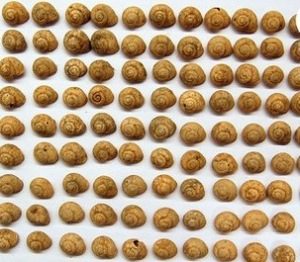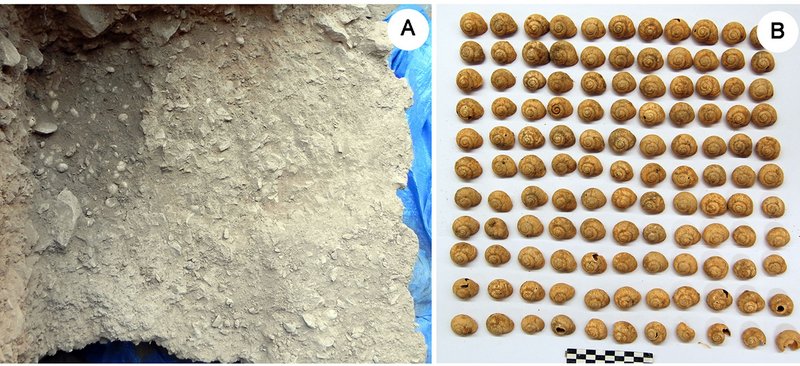
Paleolithic humans of present-day Spain may have eaten snails as much as 30,000 years ago, or 10,000 years earlier than inhabitants of Mediterranean regions, according to research by Javier Fernández-López de Pablo from Institut Català de Paleoecologia Humana i Evolució Social and colleagues.
The researchers discovered land snail shell remains dated to about 30,000 years ago at the site of Cova de la Barriada, Spain. Groupings of complete shells from a large land snail species were found in three areas of the site, corresponding to different time points. They studied these remains by investigating patterns indicating likley land snail selection, consumption, and accumulation at the site, and then analyzed the shells’ decay, fossilization process, composition, and age at death by measuring the shell sizes.
The snails appeared to be associated with prehistoric human-constructed structures that may have been used to cook the snails, along with stone tools, and other animal remains that were likely roasted in ambers of pine and juniper at 375 C. The authors posit that these results point to previously undiscovered patterns of invertebrate use and may highlight a broadening of the human diet in the Upper Paleolithic in the Mediterranean basin. In neighboring Mediterranean areas, eating land snails didn’t appear until about 10,000 years later, which may make these newly found snail shells the oldest known evidence that ancient human populations used them as a food resource in Europe about 30,000 years ago.
________________________________________________
This image depicts Upper Palaeolithic combustion structure containing human collected and cooked land snails and carbonaceous sediments (A) and complete land snails recovered into the combustion structure (B). Credit: Fernández-López de Pablo et al.
________________________________________________
The study is published in the open-access journal PLOS ONE, at http://dx.plos.org/10.1371/journal.pone.0104898*
________________________________________________
*Fernández-López de Pablo J, Badal E, Ferrer Garcıa C, Martínez-Ortí A, Sanchis Serra A (2014) Land Snails as a Diet Diversification Proxy during the Early Upper Palaeolithic in Europe. PLoS ONE 9(8): e104898. doi:10.1371/journal.pone.0104898
Sources: Adapted and edited from a PLOS ONE press release.
________________________________________________
Read about the most fascinating discoveries with a premium subscription to Popular Archaeology Magazine. Find out what Popular Archaeology Magazine is all about. AND MORE:
On the go? Get the smartphone version of Popular Archaeology as an app or as an ebook.
Popular Archaeology’s annual Discovery Edition eBook is a selection of the best stories published in Popular Archaeology Magazine in past issues, with an emphasis on some of the most significant, groundbreaking, or fascinating discoveries in the fields of archaeology and paleoanthropology and related fields. At least some of the articles have been updated or revised specifically for the Discovery edition. We can confidently say that there is no other single issue of an archaeology-related magazine, paper print or online, that contains as much major feature article content as this one. The latest issue, volume 2, has just been released. Go to the Discovery edition page for more information.







